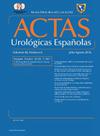ADN tumoral circulante en el cáncer de vejiga músculo invasivo: una revisión sistemática
IF 1.2
4区 医学
Q3 UROLOGY & NEPHROLOGY
引用次数: 0
Abstract
Objectives
To evaluate the role of circulating tumor DNA (ctDNA) as a prognostic and predictive biomarker in the perioperative management of muscle-invasive bladder cancer (MIBC).
Methods
We conducted a systematic literature review using PubMed, Medline, and Embase, following PRISMA guidelines. Studies from January 2013 to March 2024 were included if they examined ctDNA in MIBC patients undergoing radical cystectomy (RC) and perioperative chemotherapy or immunotherapy.
Results
Eight studies were included. ctDNA detected before RC was associated with poor recurrence-free survival and higher risk of nodal and locally advanced disease. Postoperative ctDNA levels correlated with shorter disease-free survival and higher recurrence rates. ctDNA clearance during neoadjuvant chemotherapy was predictive of treatment response. ctDNA status post-neoadjuvant immunotherapy correlated with pathological outcomes and recurrence rates.
Conclusions
ctDNA is a promising biomarker for predicting oncological outcomes in MIBC, with potential to guide perioperative treatment decisions. Further randomized controlled trials are needed to validate these findings.
侵袭性肌肉膀胱癌的循环肿瘤DNA:系统综述
目的评价循环肿瘤DNA (ctDNA)在肌肉浸润性膀胱癌(MIBC)围手术期治疗中作为预后和预测性生物标志物的作用。方法按照PRISMA指南,使用PubMed、Medline和Embase进行了系统的文献综述。2013年1月至2024年3月的研究纳入了接受根治性膀胱切除术(RC)和围手术期化疗或免疫治疗的MIBC患者的ctDNA检测。结果共纳入8项研究。在RC之前检测到ctDNA与较差的无复发生存和较高的淋巴结和局部晚期疾病风险相关。术后ctDNA水平与较短的无病生存期和较高的复发率相关。新辅助化疗期间ctDNA清除可预测治疗反应。新辅助免疫治疗后ctDNA状态与病理结果和复发率相关。结论dna是一种很有前景的生物标志物,可用于预测MIBC的肿瘤预后,并有可能指导围手术期的治疗决策。需要进一步的随机对照试验来验证这些发现。
本文章由计算机程序翻译,如有差异,请以英文原文为准。
求助全文
约1分钟内获得全文
求助全文
来源期刊

Actas urologicas espanolas
UROLOGY & NEPHROLOGY-
CiteScore
1.90
自引率
0.00%
发文量
98
审稿时长
46 days
期刊介绍:
Actas Urológicas Españolas is an international journal dedicated to urological diseases and renal transplant. It has been the official publication of the Spanish Urology Association since 1974 and of the American Urology Confederation since 2008. Its articles cover all aspects related to urology.
Actas Urológicas Españolas, governed by the peer review system (double blinded), is published online in Spanish and English. Consequently, manuscripts may be sent in Spanish or English and bidirectional free cost translation will be provided.
 求助内容:
求助内容: 应助结果提醒方式:
应助结果提醒方式:


